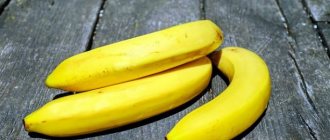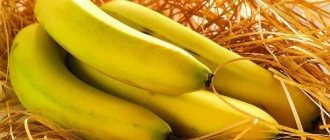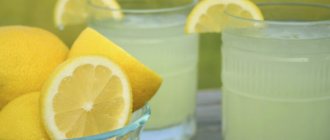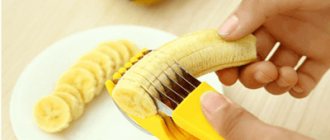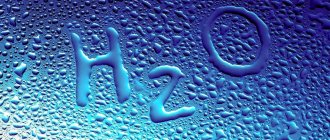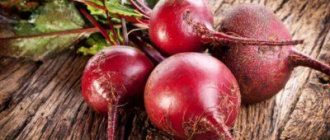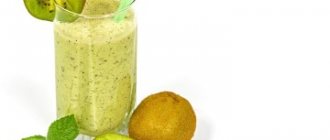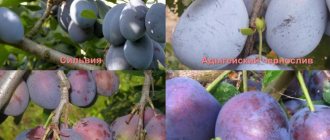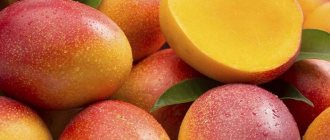Characteristics of the fruit
The fruit, rich in important substances, has an oblong semicircular appearance, with a pointed tip of smaller diameter than the fruit itself. Elongated ribs run along its entire length, smoothing out according to the degree of maturity. Banana peel is dense and its thickness partly depends on the variety of the fruit. The nutritious part of a banana is the pulp, which, when fully ripe, is equal to 75% of the total weight of the fruit.
The unripe fruit is distinguished by its color, as well as its distinctive appearance. The unripe delicacy has a greenish rind color that adheres tightly to the pulp. In turn, the pulp has a hard appearance and breaks when folded.
A ripe fruit, depending on the variety, contains around 20% starch by weight and fructose instead of sugar. It is distinguished by its unique aroma and is divided into group chemical composition - “dessert” and “planktein”.
Banana diet
Many people use the banana diet to quickly lose a couple of extra pounds.
With this nutrition system, you need to eat 3 pieces a day and drink 1 liter of low-fat kefir.
This diet perfectly cleanses the intestines of toxins, removes excess fluid and reduces swelling.
When consumed correctly and wisely, bananas have a beneficial effect on the entire body.
But there is no need to overuse this product.
Bananas are best eaten in the first half of the day; they will be an excellent addition to breakfast; they can be given to children at school or taken with you to work as a snack.
In any case, freshly eaten fruit will be healthier than a sandwich grabbed on the run.
Chemical composition of banana
One ripe banana fruit contains in its pulp a massive amount of components and substances necessary for the human body. The fruit contains a high balance of pectin, with fiber, plus dietary fiber. They play a major role in the human digestive system.
The fruit has a significant mineral and vitamin composition. The leading link among the group of vitamins is B, among which there is pyridoxine (B6). One hundred grams of banana contains the daily requirement of this element.
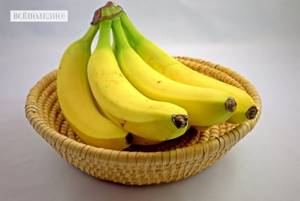
Of the other vitamins, the fruit contains ascorbic acid (C), which replenishes the daily requirement by 15%. Vitamins of the same line - B9, B5, B1, B2, beta-carotene, PP, choline, K, A, E are also present. Regular use of this culture helps restore the balance of the vitamin part in the human body.
Proteins fats carbohydrates (BJU)
Bananas can be consumed even when on a diet, without fear of gaining excess weight. There are different opinions about this product. On average, a peeled banana contains approximately 120 kcal.

It should be noted: Overripe fruit has a higher calorie content. One spotted fruit contains about 200 kcal.
A small fruit contains up to 90 kcal, which contains approximately:
- Carbohydrates – 32 g;
- Protein – 2.5 g;
- Fat – 0.2 g.
Tip: Calories in an individual fruit can be determined by weighing it on a kitchen scale. The weight of an average fruit is 130-160 g. To determine the exact calories, the values given below are multiplied by a factor of 1.4.
BJU content in 100 g of fruit:
- Carbohydrates – 21.8 g;
- Protein – 1.5 g;
- Fat – 0.1 g.
Vitamins
This fruit from the south helps in the prevention of many diseases. It is a source of vitamins important for humans. Contents per 100 g of fruit:
| Vitamins: | Weight: |
| AT 2 | 0.07 mcg |
| AT 4 | 10 mg |
| AT 6 | 0.5 mg |
| AT 9 | 19 mcg |
| IN 1 | 0.03 mcg |
| AT 3 | 0.7 mcg |
| AT 5 | 0.5 mcg |
| E | 0.2 mg |
| A | 15 mcg |
| WITH | 9 mg |
The vitamin C contained in the fruit can help the weakened human body in the fight against infectious diseases, removes toxins and helps preserve youth. It is a strong antioxidant and promotes blood renewal in the metabolic process.

Without Ascorbic acid, the body does not absorb iron and calcium well, and the production of collagen in bone tissue is disrupted. There are regular disruptions in the stability of the immune system. Vitamins C support a person’s skin and allow it to remain in a young, toned state.
Interesting: The group of B-vitamins is necessary for the human body to ensure stable functioning of the nervous system. It eliminates the consequences of stress and attacks of depression. Relieves nervousness and chronic fatigue.
Vitamin A contained in the fruit is involved in the metabolic reactions of the human body and plays a dominant role as an antioxidant. Helps in skin regeneration, in the restoration of bone, damaged tissue. Normalizes the strengthening of the cardiovascular part of the body, fights the early signs of aging and fights cancer.
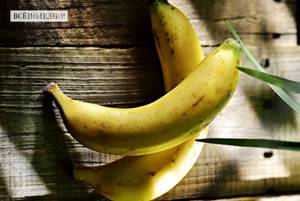
Vitamins E promote lipid absorption and tighten the endocrine gland. The relaxation of the nervous system keeps it stable. The possibility of fertility, preservation of beauty and youth of the skin is also the merit of this vitamin.
Mineral composition
Banana has an impressive mineral composition, consisting of:
- Phosphorus;
- Potassium;
- Calcium;
- Magnesium;
- Selenium;
- Sodium;
- Iron;
- Zinc;
- Fluorine;
- Copper;
- Manganese;
- Iodine;
- Sulfur;
- Chlorine.
One of the important trace elements in human life is potassium. In addition to supplying oxygen to brain cells, its responsibilities include supporting the stable functioning of the heart muscles. Forms skeletal tissues, as well as teeth. Only a couple of fruits are enough to stock up on minerals for a day.
Note: For people suffering from heart pain, experts recommend eating bananas. The mineral helps in relieving pain in muscle tissue and convulsive syndromes.
Product Nutrients
For information for ignorant people: A nutrient is an element that is biologically significant in the life of living organisms. They are divided into two groups: macronutrients (carbohydrates, proteins and fats) and micronutrients (a number of vitamins: A, B12, D, B6), and also mineral composition (Zn, Mn, Mg, Fe).
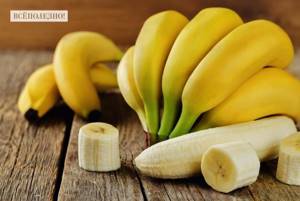
None of the products can fully provide the body with the entire set of substances that affect human development and growth. Therefore, he needs a large set of them, as well as taking dietary supplements.
Knowing about the benefits of minerals to the human body, it is easy to understand and separately calculate your daily diet for consuming concrete. The Russian Ministry of Health advises Russians to get up to 12% from proteins. The recommended intake from fats is 30%, and from carbohydrates up to 60%.
Use of banana on the farm
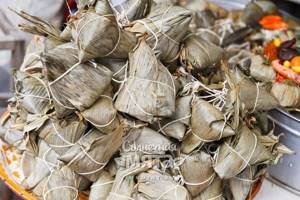
Banana leaves - tropical eco-packaging.
It's not just people who pamper their taste buds with these fruits. Wild animals, in particular monkeys, love them very much, and the peel and not particularly sweet fruits of some types of bananas are used as feed for cattle and poultry. The remains of boiled fruits and flour from them are also used.
Residents of India, willy-nilly, protect the ecology of our planet, since they have to use large banana leaves instead of disposable plates. I would not refuse such eco-friendly dishes! By the way, Buddhists and Hindus use these natural dishes in their sacred ceremonies - they offer food to the deities.
They also wrap food and gifts in strong, large banana leaves, use them to protect themselves from tropical rains, cover the roofs of huts with them, and use them instead of toilet paper.
Interestingly, some individual citizens of tropical countries grow this plant just for the leaves.
I also know a strange recipe for Ayurvedic toothpaste, which I have never used in practice. The banana peel is burned and the resulting ash is used to clean the teeth. It seems like after such a procedure they become not only clean, but even white (I almost wrote “...and fluffy”!).
